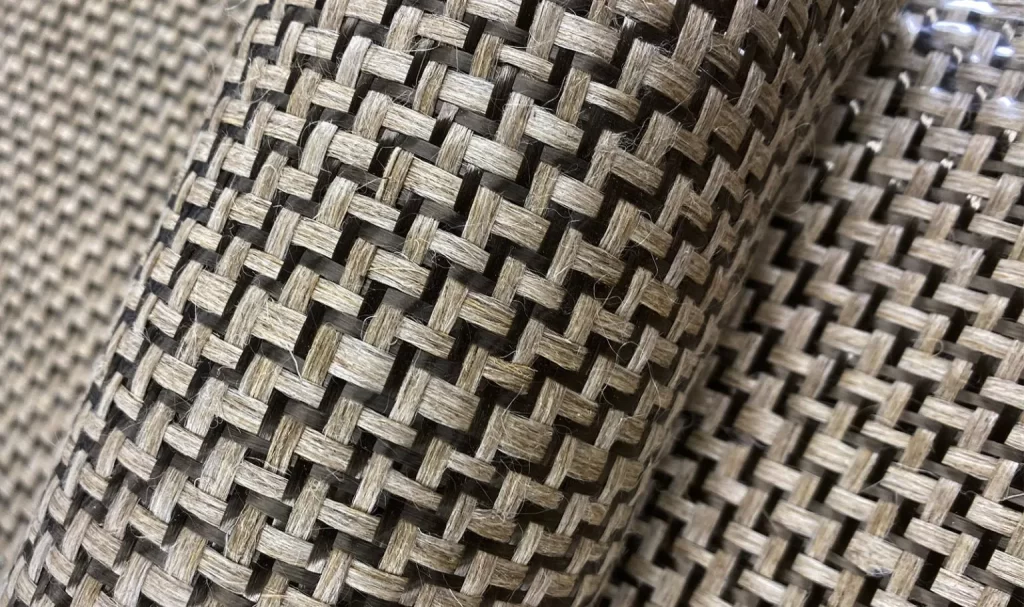Are Flax Fiber Yachts a Viable Solution for Sustainable Yachting?

With growing demands for sustainable yachting solutions, the marine industry has begun exploring alternatives that could permanently replace glass or carbon fiber and polyester resin composite with eco-friendly composites that are solid, green, and lightweight.
Building a future of sustainable yachting with natural fiber composites, Sunreef Yachts Eco has introduced plant-based elements for a negative carbon footprint. More specifically, the Gdansk shipyard’s research and development team recently begun the integration of flax fiber to obtain composite structures of the highest quality with impeccable mechanical characteristics.
The Indigenous Plant
Nearly 85 percent of the world’s flax is grown in Western Europe under environmentally friendly conditions. Moreover, it acts as a rotational crop for enhanced harvesting on existing farmlands. It has relatively lower requirements for nutrients, water, and chemicals for cultivation or retting. The natural retting process is enabled by bacteria and fungi while harvesting is largely mechanical. Best of all, the plant can be used in its entirety.
Why Flax?
The primary reason for usage of the flax plant is due to its nature of carbon dioxide absorption. In fact, flax fiber is known to demonstrate a negative CO2 footprint and has been recognized as one of the strongest natural fibers.
Additionally, it has excellent physical and mechanical properties with outstanding durability. Its unique properties include high vibration and sound absorption, which is higher than both glass and carbon fiber. Likewise, it offers improved weight efficiency and thermal isolation when compared to carbon fiber.
Applications Onboard
Like most fabrics, flax fibers too can be dyed into a variety of colours and woven into countless patterns. Flax fiber is best paired with bio-based or recyclable resin to create reliable, solid natural composites. Nonetheless, the mix remains recyclable as fiber, and resin can be reextracted.
The incorporation of flax fiber initially started from smaller non-structural elements and furniture pieces such as the navigation control panel, captain’s chair, bar module, outdoor (deck, flybridge, bow) tables, jacuzzi, and sofas. However, it has quickly migrated onto more sizeable internal and external natural fiber composite formations, i.e., bimini ceilings.

Exploring Other Green Composites
Likewise, Sunreef Yachts Eco is currently demonstrating the possibilities of using basalt fiber alongside flax for more significant energy savings in production. This naturally occurring fiber is obtained from volcanic rocks, formed because of the rapid cooling of magma.
Although basalt rock is hard and dense, the process of conversion into fibers leaves behind virtually no carbon footprint or toxic acids. Also, unlike glass fiber production, basalt fiber accounts for significant energy and water savings. Basalt fiber is seemingly a viable solution for sustainable yachting as it is a non-combustible, extremely heat resistant material with mechanical resistance greater than that of glass fiber. Additionally, it has great potential for thermal isolation, i.e., it can be deployed in regions with temperatures ranging between -260°C to +1200°C.

Consistently pursuing its holistic journey, Sunreef Yachts Eco continues to make eco-conscious choices to reassess every aspect of yachting.
Frequently Asked Questions
Can yachts be eco-friendly?
Yes, Sunreef Yachts Eco has begun the implementation of natural fiber composites to make its catamarans more environmentally friendly. These fibers can be obtained in a non-toxic, no waster fashion as it accounts for no carbon emissions. Using flax fiber and basalt fiber onboard allows for improved strength, heat resistance, and shock and sound absorption. Alongside this, these are recyclable components that do not end up as landfills.
What materials are sustainable for yachts?
Flax fibers can readily be used onboard on structural elements and furniture of all sizes. Despite being sustainable, flax is easily the strongest fiber in the world with attributes that outperform glass fiber in ways more than one.
